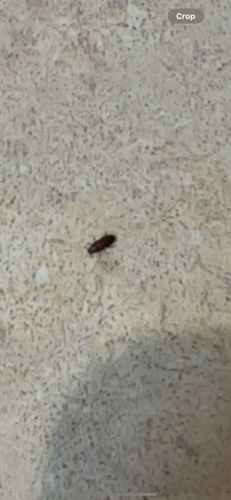Confused Flour Beetle
Scientific Name: Tribolium confusum
Order & Family: Coleoptera, Tenebrionidae
Size: Typically 3 to 4 mm (0.12 to 0.16 inches) in length.

Natural Habitat
Found worldwide, especially in stored food products in pantries, warehouses, mills, and food processing plants. They thrive in warm, humid environments.
Diet & Feeding
Primarily feeds on milled grain products like flour, cereal, pasta, and dry pet food. They can also feed on dried fruits, nuts, beans, spices, and chocolate. Both adults and larvae cause damage.
Behavior Patterns
Confused flour beetles are very active insects and can be observed crawling quickly. They are attracted to light but prefer dark places to lay eggs. They reproduce rapidly in warm, humid conditions and can live for more than a year. The larvae are worm-like and yellowish-white.
Risks & Benefits
Potential Risks: Major pest of stored food products, rendering them inedible due to contamination with their bodies, fecal pellets, and secretions, which can impart a foul odor and taste to infested products. Can cause significant economic losses in the food industry. They do not bite or transmit diseases to humans. Benefits: No significant benefits as they are primarily considered pests.
Identified on: 8/18/2025